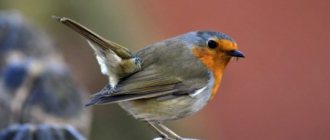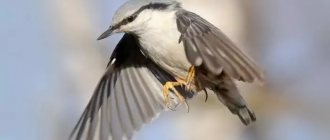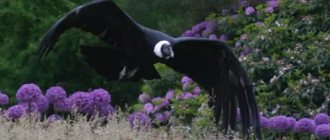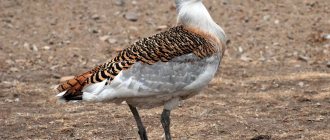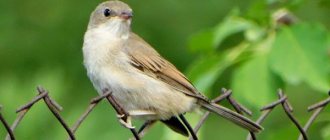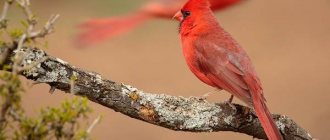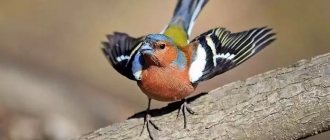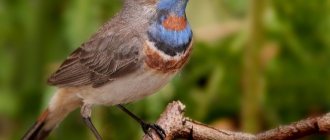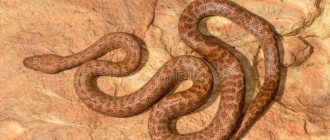Cities and semi-wild places in the Moscow region are important or even main habitats for some bird species. In this unusual environment, which is a combination of human genius and the forces of nature, a unique habitat has been created for bird species rarely found in other regions of the country.
Avifauna moves closer to human settlements by the arrival of the cold season of the year. Migrant species are found in parks; they are “city dwellers” in winter and return to nature when it gets warmer. These species do not need to fly to the warm South, because in cities it is not as cold as in the forest. Finches, goldfinches, wagtails, and cuckoos visit cities like village relatives visit people.
White stork
Large marsh bird. The plumage is white, the tips of the wings are black, the beak and legs are orange-red. The average weight of individuals is 3–4 kg. Inhabits swamps, canals, meadows and river banks.
It feeds on snakes, frogs, and fish. Does not disdain lizards. May eat small mammals or small birds. The white stork migrates from Europe to Africa for the winter.
Black stork
Similar in characteristics to the white stork. The exception is the color of the bird - it is almost all black (back, head, chest and tail). The ventral part is white. Average weight is about 3 kg. The bird lives throughout Eurasia. More often found in swamps and rivers. Arrives in Europe in mid-spring (late March - early April).
It feeds on fish, mice, insects, and mollusks. Can catch snakes and lizards.
The bird is rare. Listed in the Red Book of the Russian Federation and the CIS.
Deaf cuckoo
The bird has the standard coloration of the common cuckoo. The plumage of the male is light gray (ashy) in color. The female is brighter. She has visible red spots.
The deaf cuckoo lives in deciduous and coniferous forests and forest-tundra zones. Migration takes place in the fall in an easterly direction. Winters in the Philippines.
The bird's diet includes caterpillars, insects, and beetles. Eats butterflies, flies, spiders and chafers. In times of hunger, it can attack the offspring of other birds living nearby.
Common lentils
A small bird, similar in size to a sparrow. The head of the lentil is red, the plumage is gray-brown, and the belly is white. It breeds in Eurasia, and in winter flies to the southern part of East Asia.
Lives in densely growing forests and bushes. Can be found at the edge of a forest or near a river. It is difficult to see the bird - it is well camouflaged. The lentils give out a ringing whistle.
It feeds mainly on plant foods - berries, seeds. Rarely eats insects. Flies to wintering grounds in mid-August (from Europe to the east). Arrives in May.
Nightingale
Songbird. The nightingale is difficult to spot in the foliage. The feathered one is distinguished by its beautiful, melodic singing. The male and female have almost the same color: the abdomen is gray-white, the upper body and head are smoky brown, sandy.
Nightingales live in forest areas, in bushes, and in city parks. They feed on beetles and worms. They love spiders, caterpillars and ants. Collect seeds and berries.
Common cuckoo
A medium-sized bird (up to 600–700 g). The color is brown interspersed with dark and light shades. The cuckoo is famous for its lack of “maternal instinct.” She lays her eggs on other birds (she does not hatch them herself).
Lives in forests and swamps. It feeds on lizards, caterpillars, and beetles. Might eat a mouse.
The bird doesn't sing. She makes the familiar “ku-ku” sounds to everyone. The habitat covers many zones - from deserts to the Atlantic. Migratory bird. Winters in Africa.
Great cormorant
Large fishing bird. It has a long neck and a curved beak. The plumage color is black, the beak is white. The lower part of the body has a lighter shade. Cheeks yellow. Weight from 2 to 3 kg.
The cormorant lives in Europe, Africa, and North America. Lives on the shores of seas and inland waters. Migratory bird. Winters in the south of Crimea.
It feeds on fish (dives 4 m for it), insects and mollusks.
Zhelna
Another name is black woodpecker. Lives in the forests. It has a black color, the head (crest) is red. It feeds on insects (obtains them from tree bark). The voice is loud and melodic (reminiscent of the sound “kru-kru-kru”).
Habitat: forest-steppe of Eurasia. Loves coniferous and mixed forests, deep taiga. In search of food, the bird hollows out trees, getting beetles and larvae.
Hoopoe
Migratory, nesting bird. The representative has a bright color: the head is red, the body with wings is striped (black-brown-white). The breast and lower part have a pinkish tint.
Lives in the Leningrad and Moscow regions, in the taiga zone. Prefers open places with sparse shrubs and grass. Not afraid of people.
It feeds on ants, beetles, and caterpillars. The bird's voice sounds like "whoop-whoop-whoop." The hoopoe also hisses and squeals.
Magpie
The bird looks like a crow. The predominant color is black and white. The tips of the wings are greenish-purple, the belly is white. The tail is long. Lives in all parts of Russia. Settles in forests and parks. Makes chirping sounds.
The bird has high intelligence. She is trainable and can recognize herself in the mirror.
It feeds on forty lizards, beetles, and mice. Does not disdain carrion. Can destroy nests.
Tufted duck
Belongs to the duck family. The bird is small - weighing up to 750 g. Color - black (the male may also have white sides). The beak is short and wide. The sounds of a duck are “gyun-gyun.” It lives in bodies of fresh water: lakes, ponds, rivers.
Arrives in April, as soon as the ice melts. Spends almost all his time in the water. Dives up to 4 m deep. The blackling feeds on small fish, crustaceans, and mollusks. Sometimes eats aquatic plants.
The bird is listed in the Moscow Red Book.
Saker Falcon
Large falcon bird. Colour: The back is brown against a background of contrasting gray feathers. Habitat: plateaus, steppes of southern Siberia and the Baikal region.
The bird hunts small mammals (mice, gophers). Belongs to partially migratory birds. It is considered an endangered species - the balaban is listed in the Red Book.
Waxwing
Refers to songbirds. Outwardly it resembles a sparrow with a crest. Color: gray-pink. There is a yellow stripe along the edge of the tail. Breeds in the taiga forests of Russia, migrates to the southern parts of the continents.
The waxwing is a flocking bird. It feeds on berries, larvae, and insects. Makes trills “svi-ri-ri-ri”.
Snipe
A small dark brown bird with a long stick-shaped beak. The snipe lives in fresh or salty water areas with dense vegetation. Loves marshy areas and wet meadows.
Winters in Southern Europe, migrates to Asia. Birds eat spiders, worms, small crustaceans, seeds and plant fibers.
Golden eagle
Large bird of prey. Refers to hawks and eagles. The difference from its relatives is its “golden” head. The bird has large eyes and a hooked beak. Wingspan up to 2 meters. Weight - up to 5 kg.
Golden eagles live in open areas - on plains and foothills. The bird migrates short distances. It feeds on rabbits, mice, hares. Can grab a fox and a crane. Attacks young mammals - deer, sheep.
Northern chatter
Reed migratory bird. Appearance similar to a sparrow. The main color is gray-brown, the tummy is whitish. Habitats: dense bushes, forest edges, clearings and thickets.
The bird is listed in the Red Book of the Yaroslavl region and R. Mordovia. A little-studied species.
Burgomaster
Large polar gull (weight up to 2 kg). The color is pale: the head and chest are white, the back to the tail is grayish. The bird lives on rocky coasts and islands. The glaucous glaucous is an omnivorous bird. Loves shellfish, berries, other people's eggs and chicks. Does not refuse carrion.
Leads a semi-nomadic lifestyle. Winters near the nest.
Woodcock
Nocturnal migratory bird. Lives in swampy areas. Loves old, damp forests and wastelands. Woodcock is a solitary bird (it rarely forms groups). Is the object of hunting.
Woodcock is the size of a pigeon. It has a straight beak and a mottled brown-orange color.
It feeds on larvae, beetles, spiders, and worms. Rarely eats plant foods (corn and oats).
Bluethroat
Gray passerine bird. Males have a brightly colored breast. Females are gray-brown in color with a dotted necklace on the chest.
The voice is like a nightingale. The bluethroat can interestingly copy the sounds of many birds.
It lives near rivers (with abundant, dense vegetation and bushes along the banks), in meadows and near swamps. It is a migratory bird, but does not form a flock.
Great godwit
A large sandpiper with a small head and a long, needle-like beak. The bird's head and neck are brown, its belly is white, and the rest of the body is a dirty brown-gray hue.
Loves damp lowlands, swamps - places with high humidity. The bird is listed in the International Red Book, but is hunted in Russia.
It feeds on insects, frogs and worms. Loves crustaceans.
Godwit
A copy of the Great Godwit, only with a small neck and short beak. Migratory bird. The distribution area, habitats and nutrition are similar to its larger brother described above. The security status is not of concern.
Wryneck
A small bird from the woodpecker family. It is migratory and spends the winter in Africa. It is called the whirlwind because of its unusual behavior - when it is picked up, it fluffs up and rotates its neck.
The color is cuckoo with brown-white-black splashes. On the head there is a crest of the same color. The abdomen is gray-white.
Loves deciduous and mixed forests - lives in old trees. Feeds on insects.
Nuthatch
An active and noisy bird (makes whistles, gurgles and other sounds) from the passerine family. There are many species of nuthatch. It is the species that determines the color of the bird. The predominant colors are blue-gray back and gray belly.
The bird feeds on plant and animal food (beetles, butterflies, larvae, nuts, seeds). Loves to live next to a person. Easily gets used to hands.
House sparrow
A classic sparrow, which is distributed throughout Russia (especially in urban areas). The main color of the feather cover is brown, the belly is gray, the back and head are brown-black.
The bird has settled down well next to humans. It feeds on vegetation and insects.
field sparrow
The bird is similar to a house sparrow, but lives further from humans - on the outskirts of the city, near plantings and vineyards. Loves bushes and thickets.
Slightly smaller in size than the brownie, the color is more saturated.
The tree sparrow is a flocking bird. Leads a sedentary lifestyle. It feeds on seeds and insects.
Great tit
It is also a well-known bird that lives in many Russian cities. It has a yellow belly and a black tie. The bird's cheeks are white. It is similar in size to a sparrow.
In the summer it lives in the forests, but with the onset of winter it flies to the city (to feed).
In summer, tits eat caterpillars, beetles, butterflies, and spiders. They love plants and berries.
Long-tailed tit
This representative is very different from the ordinary tit. The bird's tail is long. Color: head - white, back - gray-pink, belly - white-gray-pink. Has abundant downy cover.
The tit lives in the forest, near rivers and in park areas. Loves bushes. It feeds on insects and plant fruits.
Crow
The general name of a variety of species category. There are many types of crow - black, big-billed, gray, etc. Each of them has its own coloring and behavior.
Crows spend the night in a group, gathered in a large group. They also obtain food.
They are easily tamed by humans and can be trained.
Gray Crow
Large, black and gray bird. Considered a singer. She is distinguished by reasonable behavior - she is very sociable, protects her family, and forms packs.
It feeds on animal food (beetles, caterpillars, mice). May eat carrion. In the city limits he finds food in garbage dumps.
Great bittern
The largest specimen in its family (up to 2 kg). Cuckoo-colored plumage. Thick, elongated neck. Lives in reed thickets and places with standing water. Loves mild climates. Single.
The bittern feeds on eels, fish and invertebrates. Screams loudly “trum-u-trum” at night and in the morning.
Wood Pigeon
A bird from the pigeon family, widespread throughout Russia. Cautious. The color is blue or grayish. Makes cooing sounds “kru-ku-kru-kru”. Loves nature, villages.
Feeds on seeds. Rarely eats insects. It is an object of sport hunting. Because of this, its numbers are gradually declining, but the bird is not under protection.
Blue tit
A small bird that looks a bit like a tit. It has yellow belly plumage, white cheeks, and gray back. Loves to live in gardens and parks. Finds food in feeders. He easily lets people approach him.
In the wild, it lives on the edges of the forest and feeds on worms, beetles, and berries.
Red-throated loon
It is the smallest of its kind. The main color is brown, the head is gray, the belly is white-gray. There is a red-orange spot on the neck.
Loves fresh ponds, swamps and overgrown lakes. He cannot stand the presence of people and leaves his home at lightning speed.
The loon feeds on small and medium-sized fish, frogs and insects.
Types of robins
Robins (Erithacus) are a genus of birds from the flycatcher family.
three species of in nature :
- Black-throated Robin, Ryukyu Nightingale (Erithacus komadori);
- Robin (Erithacus rubecula);
- Japanese Robin (Erithacus akahige).
It is worth noting that only the last two species are described in detail; as for the black-throated robin, there is very little information about it.
Other birds of Siberia
Far Eastern stork
| Latin name | Ciconia boyciana |
| English name | Oriental Stork |
| Squad | Stork-shaped, or ankle-shaped |
| Family | Storks |
| Body length, cm | From 110 to 130 |
| Wingspan, cm | From 190 to 220 |
| Body weight, kg | 3-6 |
| Features | The iris of the eye is white. |
| Number | About 2500 individuals |
| Security status | Endangered species |
| Habitats | The bird lives near reservoirs, rivers, lakes, and swamps. |
| Additionally | Synonyms: Far Eastern white, black-billed, Chinese. |
Lesser Lesser Lesser Lesser Lesser Lesser Lesser Lesser Lesser Lesser Lesser Lesser
| Latin name | Anser erythropus |
| English name | Lesser white-fronted goose |
| Squad | Anseriformes |
| Family | Duck |
| Body length, cm | 52-64 |
| Wingspan, cm | 121-130 |
| Body weight, kg | 1,5-2,4 |
| Features | The species is similar to the white-fronted feathered representative, but differs in smaller stature and a short beak. In adults, there is a light spot on the forehead that reaches the top of the head. |
| Number | 26-30 thousand |
| Security status | Vulnerable (declining) |
| Habitats | Swamps, prairies, fields, lakes, bays, tundra. |
| Additionally | There are four subpopulations of the species: 1) Fennoscandian, 2) Western, 3) Eastern, 4) individuals raised in captivity in Sweden. |
Gooseberry
| Latin name | Anser fabalis |
| English name | Bean Goose |
| Squad | Anseriformes |
| Family | Duck |
| Body length, cm | 65-90 |
| Wingspan, cm | 140-190 |
| Body weight, kg | Average – 2.8-3.4 |
| Features | Compared to other types of greylag geese, the bird has darker plumage, orange legs and a dark head and neck. |
| Number | 680,000-800,000 individuals |
| Security status | Least Concern (decreasing). |
| Habitats | Lakes, ponds, rivers, streams. |
| Additionally | Research shows that bean goose birds nest at a distance of at least 65 m from other geese. |
Sukhonos
| Latin name | Anser cygnoides |
| English name | Swan Goose |
| Squad | Anseriformes |
| Family | Duck |
| Body length, cm | From 81 to 94 |
| Wingspan, cm | From 160 to 185 |
| Body weight, kg | 0,3 |
| Features | A distinctive feature of the species is the dark beak, at the base of which there is a large bump. |
| Number | 60 000–90 000 |
| Security status | Vulnerable (declining) |
| Habitats | Near water: on shorelines, marshy meadows, river beds; as well as in the steppes and even mountainous regions. |
| Additionally | The lifespan of the species is about 10 years. |
mountain goose
Siberian eider
White-eyed Pochard
| Latin name | Ferruginous Duck |
| English name | Aythya Nyroca |
| Squad | Anseriformes |
| Family | Duck |
| Body length, cm | 40-47 |
| Wingspan, cm | 67-73 |
| Body weight, kg | 0,4-0,6 |
| Features | The bird has a uniform dark red-chestnut body color with a white belly and lower tail. When a duck flies, a white spot appears on its belly and a wide white stripe on its wings. Both sexes are similar, but the drake is distinguished by its brighter plumage colors and white eyes. |
| Number | 160 000-250 000 |
| Security status | In a state close to threatening (decreasing). |
| Habitats | Ducks inhabit shallow wetlands with emergent and riparian vegetation. Birds are found in swamps, ponds, mudflow deposits, reeds and coastal areas. |
| Additionally | The species' favorite pastime is diving. Many individuals descend to a depth of 2.5-3.0 m and remain under water for about 15-18 seconds. |
Crested Buzzard
| Latin name: | Pernis apivorus |
| English name: | To be confirmed |
| Kingdom: | Animals |
| Type: | Chordata |
| Class: | Birds |
| Squad: | Accipitridae |
| Family: | Accipitridae |
| Genus: | Real honey beetles |
| Body length: | 52-60 cm |
| Wing length: | 38.6—43.4 cm |
| Wingspan: | 135—150 cm |
| Weight: | 600—1000 g |
Black kite
| Latin name: | Milvinae |
| English name: | Kite |
| Kingdom: | Animals |
| Type: | Chordata |
| Class: | Birds |
| Squad: | Accipitridae |
| Family: | Accipitridae |
| Subfamily: | Kites |
| Genus in subfamily: | Brahminy kites (Haliastur), Black-breasted buzzard kites (Hamirostra), Tooth-billed kites (Harpagus), Common kites (Ictinia), Chubby kites (Lophoictinia), True kites (Milvus), Slug-eating kites (Rostrhamus) |
| Body length: | 34-66 cm |
| Wing length: | 41-66 cm |
| Wingspan: | 123—180 cm |
| Weight: | 370—1100 g |
Eastern Harrier
Zimnyak
Buzzard
| Latin name: | Buteo rufinus |
| English name: | To be confirmed |
| Kingdom: | Animals |
| Type: | Chordata |
| Class: | Birds |
| Squad: | Accipitridae |
| Family: | Accipitridae |
| Genus: | Real buzzards |
| Body length: | 57-65 cm |
| Wing length: | To be confirmed |
| Wingspan: | 135—160 cm |
| Weight: | 600—1800 g |
Buzzard
| Latin name: | Buteo |
| English name: | To be confirmed |
| Kingdom: | Animals |
| Type: | Chordata |
| Class: | Birds |
| Squad: | Accipitridae |
| Family: | Accipitridae |
| Genus: | To be confirmed |
| Body length: | 50-58 cm |
| Wing length: | 40 cm |
| Wingspan: | 115—130 cm |
| Weight: | 450—1300 g |
Vulture
| Latin name: | Neophron |
| English name: | To be confirmed |
| Kingdom: | Animals |
| Type: | Chordata |
| Class: | Birds |
| Squad: | Accipitridae |
| Family: | Accipitridae |
| Genus: | Vultures |
| Body length: | 60-70 cm |
| Wing length: | To be confirmed |
| Wingspan: | 165 cm |
| Weight: | 1500–2200 g |
Bald eagle
| Latin name: | Haliaeetus |
| English name: | To be confirmed |
| Kingdom: | Animals |
| Type: | Chordata |
| Class: | Birds |
| Squad: | Accipitridae |
| Family: | Accipitridae |
| Genus: | Eagles |
| Body length: | 70—110 cm |
| Wing length: | 38.6—43.4 cm |
| Wingspan: | To be confirmed |
| Weight: | 3000—7000 g |
Saker Falcon
| Latin name: | Falco cherrug |
| English name: | To be confirmed |
| Kingdom: | Animals |
| Type: | Chordata |
| Class: | Birds |
| Squad: | Falconiformes |
| Family: | Falcons |
| Genus: | Falcons |
| Body length: | 47-57 cm |
| Wing length: | 34-39 cm |
| Wingspan: | 110-130 cm |
| Weight: | 80—1300 g |
Merlin
| Latin name: | Falco rusticolus |
| English name: | To be confirmed |
| Kingdom: | Animals |
| Type: | Chordata |
| Class: | Birds |
| Squad: | Falconiformes |
| Family: | Falcons |
| Genus: | Falcons |
| Body length: | 55-60 cm |
| Wing length: | 34-42 cm |
| Wingspan: | 120-135 cm |
| Weight: | 1000—2000 g |
Kobchik
| Latin name: | Falco vespertinus |
| English name: | To be confirmed |
| Kingdom: | Animals |
| Type: | Chordata |
| Class: | Birds |
| Squad: | Falconiformes |
| Family: | Falcons |
| Genus: | Falcons |
| Body length: | 28-33 cm |
| Wing length: | 23-35 cm |
| Wingspan: | 65-77 cm |
| Weight: | 130—197 g |
Shahin
Grouse
| Latin name: | Tetrastes bonasia |
| English name: | Hazel-grouse |
| Kingdom: | Animals |
| Type: | Chordata |
| Class: | Birds |
| Squad: | Galliformes |
| Family: | Pheasant |
| Genus: | Grouse |
| Body length: | 35–37 cm |
| Wing length: | TBC |
| Wingspan: | 48–54 cm |
| Weight: | 305–490 g |
Capercaillie
| Latin name: | Tetrao urogallus |
| English name: | Capercaillie |
| Kingdom: | Animals |
| Type: | Chordata |
| Class: | Birds |
| Squad: | Galliformes |
| Family: | Pheasant |
| Genus: | Capercaillie |
| Body length: | 110 cm |
| Wing length: | 34 cm |
| Wingspan: | 150 cm |
| Weight: | 4000—6500 g |
Ptarmigan
Altai snowcock
Keklik
Pheasant
| Latin name: | Phasianinae |
| English name: | Pheasant |
| Kingdom: | Animals |
| Type: | Chordata |
| Class: | Birds |
| Squad: | Galliformes |
| Family: | Pheasant |
| Genus: | Pheasants |
| Body length: | 85 cm |
| Wing length: | 23 cm |
| Wingspan: | 75-80 cm |
| Weight: | 2000 g |
Siberian Crane
Belladonna
Gray crane
Bustard
black-headed gull
Eastern Siberian gull
Brown pigeon
Wood Pigeon
Klintukh
Long eared owl
Great Gray Owl
Owl
| Latin name: | Bubo bubo |
| English name: | Eagle owl |
| Kingdom: | Animals |
| Type: | Chordata |
| Class: | Birds |
| Squad: | Owls |
| Family: | Real owls |
| Genus: | To be confirmed |
| Body length: | 60–75 cm |
| Wing length: | TBC |
| Wingspan: | 160–188 cm |
| Weight: | 1200–4200 g |
Deaf cuckoo
Siberian Shrike
Gray Shrike
| Latin name: | Lanius |
| English name: | Shrike |
| Kingdom: | Animals |
| Type: | Chordata |
| Class: | Birds |
| Squad: | Passeriformes |
| Family: | Shrikes |
| Genus: | Shrikes |
| Body length: | 16-18 cm |
| Wing length: | 11-12 cm |
| Wingspan: | 35-39 cm |
| Weight: | 28—30 g |
Grouse
| Latin name: | Lyrus tetrix |
| English name: | Black grouse |
| Kingdom: | Animals |
| Type: | Chordata |
| Class: | Birds |
| Squad: | Galliformes |
| Family: | Grouse |
| Genus: | Grouse |
| Body length: | 40–55 cm |
| Wing length: | TBC |
| Wingspan: | 65–80 cm |
| Weight: | 900–1800 g |
Dikusha
Cuckoo
| Latin name: | Cuculus |
| Kingdom: | Animals |
| Type: | Chordata |
| Class: | Birds |
| Squad: | Cuckoo-like |
| Family: | Cuckoo |
| Genus: | Cuckoos |
| Body length: | 25-38 cm |
| Wing length: | 8-12 cm |
| Weight: | 80-140 g |
Woodcock
| Latin name: | Scolopax rusticola |
| English name: | To be confirmed |
| Kingdom: | Animals |
| Type: | Chordata |
| Class: | Birds |
| Squad: | Charadriiformes |
| Family: | Snipe |
| Genus: | woodcocks |
| Body length: | 33-38 cm |
| Wing length: | To be confirmed |
| Wingspan: | 55-65 cm |
| Weight: | 210—460 g |
Kuksha
Nutcracker
| Latin name: | Nucifraga caryocatactes |
| English name: | To be confirmed |
| Kingdom: | Animals |
| Type: | Chordata |
| Class: | Birds |
| Squad: | Passeriformes |
| Family: | Corvids |
| Genus: | Kedrovki |
| Body length: | up to 30 cm |
| Wing length: | To be confirmed |
| Wingspan: | To be confirmed |
| Weight: | 125—190 g |
Finch
| Latin name: | Fringilla coelebs |
| Kingdom: | Animals |
| Type: | Chordata |
| Class: | Birds |
| Superorder: | New palatines |
| Squad: | Passeriformes |
| Suborder: | Singers |
| Family: | Finches |
| Genus: | Finches |
| Body length: | 14.5-15.5 cm |
| Wingspan: | 24.5-28.5 cm |
| Weight: | 15-40 g |
Great Spotted Woodpecker
Waxwing
| Latin name: | Bombycilla |
| English name: | Waxwing |
| Kingdom: | Animals |
| Type: | Chordata |
| Class: | Birds |
| Squad: | Passeriformes |
| Family: | Waxwings |
| Genus: | Waxwings |
| Body length: | 20 cm |
| Wing length: | 11-12 cm |
| Wingspan: | 32-35 cm |
| Weight: | 60 g |
Nuthatch
| Latin name: | Sitta |
| English name: | Nuthatch |
| Kingdom: | Animals |
| Type: | Chordata |
| Class: | Birds |
| Squad: | Passeriformes |
| Family: | Nuthatches |
| Genus: | Nuthatches |
| Body length: | 11-15.5 cm |
| Wing length: | 8-9 cm |
| Wingspan: | 22.5-27 cm |
| Weight: | 8.5-55 g |
Hawk
| Latin name: | To be confirmed |
| English name: | To be confirmed |
| Kingdom: | Animals |
| Type: | Chordata |
| Class: | Birds |
| Squad: | Accipitridae |
| Family: | Accipitridae |
| Genus: | Eagles |
| Body length: | 60-65 cm |
| Wing length: | To be confirmed |
| Wingspan: | 1000 cm |
| Weight: | 2000 g |
Golden eagle
| Latin name: | Aquila chrysaetos |
| English name: | To be confirmed |
| Kingdom: | Animals |
| Type: | Chordata |
| Class: | Birds |
| Squad: | Accipitridae |
| Family: | Accipitridae |
| Genus: | Eagles |
| Body length: | 76-93 cm |
| Wing length: | To be confirmed |
| Wingspan: | 180—240 cm |
| Weight: | 2800—6700 g |
Common kestrel
| Latin name: | Falco tinnunculus |
| English name: | To be confirmed |
| Kingdom: | Animals |
| Type: | Chordata |
| Class: | Birds |
| Squad: | Falconiformes |
| Family: | Falcons |
| Genus: | To be confirmed |
| Body length: | 33-39 cm |
| Wing length: | 24-29 cm |
| Wingspan: | 65-81 cm |
| Weight: | 190—300 g |
Snake eater
| Latin name: | Circaetus gallicus |
| English name: | To be confirmed |
| Kingdom: | Animals |
| Type: | Chordata |
| Class: | Birds |
| Squad: | Falconiformes |
| Family: | Accipitridae |
| Genus: | Real snake eaters |
| Body length: | 70 cm |
| Wing length: | 52-60 cm |
| Wingspan: | 170—190 cm |
| Weight: | 2000 g |
Osprey
Whooper swan
mute swan
| Latin name: | Cygnus |
| English name: | Swan |
| Kingdom: | Animals |
| Type: | Chordata |
| Class: | Birds |
| Squad: | Anseriformes |
| Family: | Duck |
| Genus: | Swans |
| Body length: | 130 cm |
| Wing length: | 52-57 cm |
| Wingspan: | 2000 cm |
| Weight: | 15000 g |
Black stork
Marsh harrier
| Latin name: | Circus |
| English name: | To be confirmed |
| Kingdom: | Animals |
| Type: | Chordata |
| Class: | Birds |
| Squad: | Accipitridae |
| Family: | Accipitridae |
| Genus: | To be confirmed |
| Body length: | 40-60 cm |
| Wing length: | 36-43 cm |
| Wingspan: | 110—140 cm |
| Weight: | 500-750 g |
Great godwit
Thrush
| Latin name: | Turdus |
| English name: | Thrush |
| Kingdom: | Animals |
| Type: | Chordata |
| Class: | Birds |
| Squad: | Passeriformes |
| Family: | Blackbirds |
| Genus: | Blackbirds |
| Body length: | 19-28 cm |
| Wing length: | 11-13 cm |
| Wingspan: | 34 - 39 cm |
| Weight: | 68—100 g |
Lark
| Latin name: | To be confirmed |
| English name: | To be confirmed |
| Kingdom: | Animals |
| Type: | Chordata |
| Class: | Birds |
| Squad: | Passeriformes |
| Family: | Larks |
| Genus: | To be confirmed |
| Body length: | 11-20 cm |
| Wing length: | 9.5—11.5 cm |
| Wingspan: | 35 cm |
| Weight: | 29—70 g |
Peregrine Falcon
| Latin name: | Falco peregrinus |
| English name: | To be confirmed |
| Kingdom: | Animals |
| Type: | Chordata |
| Class: | Birds |
| Squad: | Falconiformes |
| Family: | Falcons |
| Genus: | Falcons |
| Body length: | 34-50 cm |
| Wing length: | To be confirmed |
| Wingspan: | 80-120 cm |
| Weight: | 440—1500 g |
Nightingale
| Latin name: | Luscinia |
| English name: | Nightingale |
| Kingdom: | Animals |
| Type: | Chordata |
| Class: | Birds |
| Squad: | Passeriformes |
| Family: | Flycatchers |
| Genus: | Nightingales |
steppe eagle
Appearance of robins
Common Robin (Erithacus rubecula).
These songbirds are very modest in size. Their body length is from 15 to 16 centimeters. Weight of an adult robin: 16-18 grams. These birds have a small and thin beak, miniature but very tenacious legs. The plumage of robins is loose and quite soft; the feathers do not fit tightly to the body. This structure of the feather cover “plumps” the bird, but in fact it is smaller than it seems due to its fur coat.
The color of the plumage depends on the species: the common robin has olive-gray wings, tail and back, the chest and abdominal area are light gray, but the chest, throat and frontal part have a bright orange tint; As for the Japanese Robin, the upper part of its body is reddish, the lower part of the body is bluish-gray. Female robins can be distinguished from males only by a brighter spot on the chest (which is characteristic of males).
Nutrition
The basis of nutrition is insects; their larvae are also suitable. Robins also enjoy feasting on spiders, worms and even small mollusks (snails). By mid-summer, when the berries are ripe, they include this “dessert” in the diet: in August they eat blueberries and buckthorn, and in the fall they switch to rowan, spruce seeds and elderberry.
In the spring, when plant food is not available, the central place in the diet is occupied by animal food - beetles, ants and other invertebrates. As follows from the description of the robin , it prefers not to fly too high, and therefore looks for food in the soil and the lower tier of trees. There are a huge variety of insect species consumed by these birds; they are not picky in this matter.
In late autumn, they often fly up to feeders near people’s homes and can start fights near the “buffet.” They are unpretentious in this matter and take well to feed mixtures. Soft food is their absolute priority; they like to eat plenty and often.
However, this method of feeding is not always convenient for them - their paws are not designed to cling to the edges of feeders. Wide windows or free pallets in the structure are perfect for them. You can also simply sprinkle the food on an open surface.
If you train a robin to eat near your house, in the morning you can enjoy its quiet but very melodic singing. Especially contact individuals may even allow themselves to be stroked, happily basking in the hands of a person.
In the summer, they often fly up to gardeners and gardeners, looking for seeds, earthworms and other insects that are unnecessary when sowing. Thus, it even slightly helps to increase productivity. These birds are very popular in England, where, according to some sources, it is considered the national bird. Thanks to its bright color, it was also awarded the title of Christmas symbol.
Where do robins live?
Japanese Robin (Erithacus akahige).
The common robin (robin) lives in Europe, in addition, it lives in the Caucasus, Western Siberia, Asia Minor, and North-West Africa. The Japanese species of robins lives in China and Japan. The southern populations lead a sedentary lifestyle, while the northern populations make seasonal migrations to warmer regions.
The robin bird is distinguished by its individual approach to life, if one can say so about birds, this is expressed in everything: robins live alone, they even fly alone for the winter. These little birds fiercely protect their territory from the encroachments of others. Males define their territory, including by issuing vocal “notices” that “the place is occupied.”
In large cities in the north, robins can winter near human habitation.
The birds got the name robins for their loud singing in the morning: their trills are heard especially loudly at sunrise and sunset, but in general, robins sing all day long.
Lifestyle and habitat
The robin's habitat is extensive - the North Sea coast, Morocco and even North-West Africa. To the north it lives as far as Finland and Scandinavia, including Western Eurasia. In Russia, you can hear the singing of the Robin in the middle zone, and not only in the forests.
This bird chooses dense forests - it especially likes thickets of hazel and alder. They can also be spotted in overgrown groves of parks, and she tries to avoid pine plantings filled with sunlight.
Robins are not afraid of people and can settle near houses
They are not afraid of people, so they even settle in gardens if they like them. They prefer places with high humidity – close to bodies of water, for example.
The robin does not live with other birds , often starting battles for a good place. Males can fight among themselves for land, and the death rate in them is high - up to 10%. Adult individuals prefer a solitary lifestyle after dividing the territory; they rarely get along even with their own species. After migrating south, they return to their original places.
The robin prefers daytime activity and can sometimes be found at night near artificial light sources. Despite some similarities with other representatives of its family, this bird is distinguished by its habits: it moves with jerky movements, often leans forward. It prefers to perch on lower branches, unlike many small birds.
At the end of the 19th century, attempts were made to artificially breed this species in several countries - New Zealand, Australia and America. However, the robin did not take root in new places; a possible reason was the need for annual migration, because the robin is a migratory bird.
They migrate in late autumn and are among the first to return in spring - thick plumage allows the birds to comfortably tolerate low temperatures. Returning to their native lands in late March - early April, the males immediately begin singing, opening the breeding season. The chirping reaches its apogee by the middle of the second month of spring, because the first chicks appear already in May.
Robin breeding
A male robin sings in the spring forest.
Robins lay eggs twice a year. There are from 5 to 7 eggs in a clutch. Incubation of future chicks does not last long - about 13 - 14 days. After birth, for the first 12 days, the babies sit in the nest, their parents (both male and female) feed them. On the 13th day, the chicks make their first “exits” from the nest, however, they stay at a close distance.
Lifestyle
Robins get along well with people and are not afraid of them at all. It’s quite possible to feed small bright birds and admire them somewhere in a city park. But in relation to their relatives, robins are loners, so they live and fly away to spend the winter separately.
Habitats
The robin is found throughout Europe, as well as in some regions of Asia and Africa. She prefers to hide in forests, but nowadays she is increasingly moving to gardens, squares and parks in search of food.
Photo: fotokto.ru
Diet
What robins love most is seeds and berries. In addition, they are excellent hunters of small insects, so the basis of their diet is beetles, spiders, centipedes and all kinds of worms. The sharp thin beak even allows you to catch snails.
Photo: placepic.ru
Wintering
Robins from the southern regions lead a sedentary lifestyle. But the rest have to migrate for the winter closer to warmth - to certain regions of Africa, Asia and Western Europe. In early spring they return home. First, the males arrive and occupy the territory, and then the females fly to them.
Photo: placepic.ru
Captivity
The robin can be tamed, and it will even feel quite comfortable in captivity. This may be because the practice has been around for centuries thanks to her unique singing talents. The robin is unpretentious in everyday life if you provide it with live insects and a bath for bathing.
Photo: culture.ru
Jay (50 photos): description of the bird, what it eats and where it lives
Enemies of robins in nature
Larger feathered predators are not averse to hunting these birds: falcons, owls, in addition, they attack robins, and their nests are also destroyed by predators such as forest cats, ferrets, foxes, stoats, martens, weasels.
Life in captivity is not a burden for robins: if they are properly cared for, they quickly adapt, get used to their owner and delight him every day with their ringing trills.
If you find an error, please select a piece of text and press Ctrl+Enter.
Singing bullfinches
The singing of bullfinches is a special gift. These birds are able to imitate the singing of other birds and can repeat melodies in captivity. That is why in Rus' the bullfinch was nicknamed the “Russian parrot”. One can observe the following picture: in a voice that is completely unnatural for bullfinches, they imitate crows. This is very funny and means that the animal kingdom has a sense of humor. Singing of bullfinches - flute and whistle sounds. Lingering, non-stop. Melodic with lots of introductory crackles and shimmers. This means that there are possibilities for reproducing different sounds in the bullfinch’s voice.
Grey-headed Bullfinch
Malinovka – photo
Miniature robins with long, thin legs look simply adorable. Is not it?
Photo: pinterest.com Photo: rasfokus.ru Photo: elena-zhzhenova.livejournal.com Photo: placepic.ru Photo: placepic.ru Photo: fotokto.ru Photo: fotokto.ru Photo: fotoload.ru Photo: fotokto.ru Photo : photocentra.ru Photo: placepic.ru
Photo: wallbox.ru Photo: pixabay.com
Photo: snt-apeks.ru
Photo: smallivingworld.ru Photo: placepic.ru Photo: infourok.ru Photo: erbirds.ru Photo: fotokto.ru Photo: club.foto.ru Photo: onedio.ru Photo: wallhere.com
Did you like the post? Subscribe to our channel in Yandex.Zen, it really helps us in our development!
